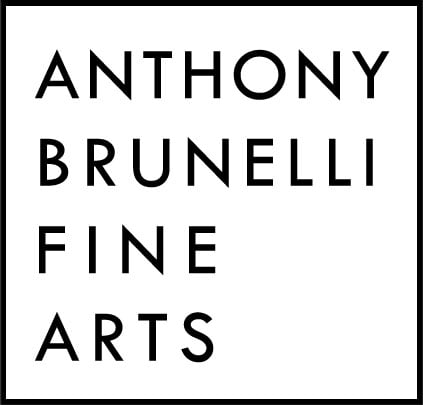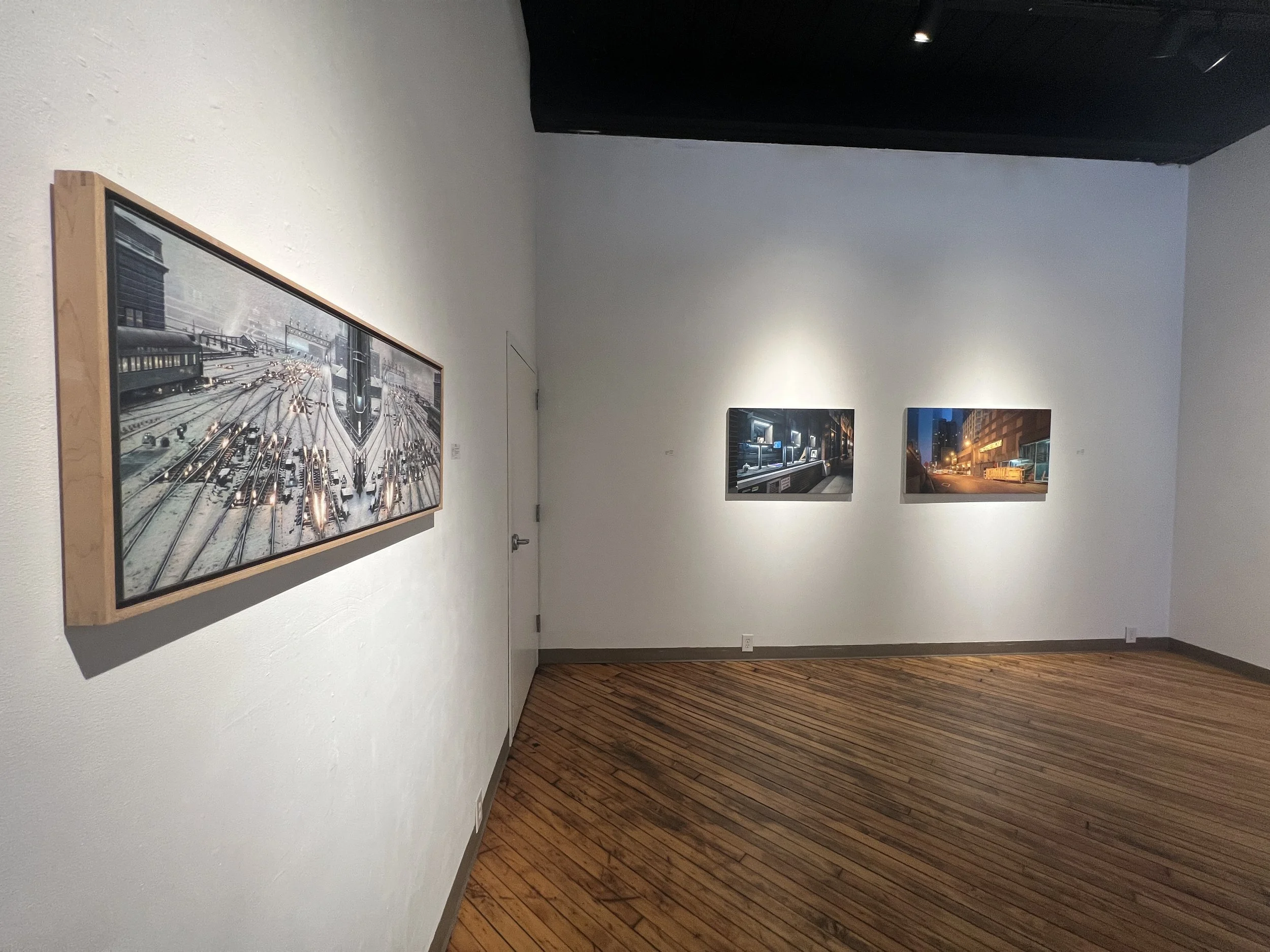NEW MYSTICAL REALISM: eric green & hisaya taira
186 STATE ST.
6 September - 26 October, 2024
Press Release:
New Mystical Realism has roots in existentialism, transtheism, and metaphysics where spiritual and material worlds intersect. Eric Green and Hisaya Taira’s respective approaches to realism are meticulous, yet their paintings escape (even transcend) style through a deeper investigation of time and space. Their work calls viewers’ attention to something familiar, all the while challenging perceptions of our material world. While their paintings appear photographic at first glance, there are subtleties that bring us further into altered realms; collected memories, reveries, or dream-like states.
Hisaya Taira’s paintings are acrylic on canvas wrapped over panel with a smooth, matte finish. His work is unframed with no boundaries or limitations, and their silence is contained by the pigment within. His subjects capture fleeting moments in public spaces where we are challenged to find quiet - New York City subway stations, city street views at dawn or dusk, bus terminals, stairways, escalators. Curiously, his compositions are often void of human presence, or may be occupied by a single person, almost a rare or impossible moment.
Tsutomu Miura, Chief curator, Tottori Prefertural Museum in Japan writes,
(Hisaya) Taira’s works are best described as “empty landscapes.” Delving further, I believe they reflect a feeling of “emptiness” in the painter’s consciousness…By taking the detailing to an extreme, the “emptiness” that the painter felt in that place emerges. Although his works are based on photographs, he depicts his own feelings that do not appear in the photos; thus, Taira never presents photographs as works, nor does he completely replicate them. (Escalator Paintings: Hisaya Taira, 2023, Yoshiaki Inoue Gallery, Japan)
New Mystical Realism expands upon the boundaries of historical movements like Photorealism and Contemporary Realism where photographic sources and direct observations are quintessential to the painting process. New Mystical Realism, as Brunelli describes, employs close reference, yet also brings a multi-dimensional interpretation, where time, space and place are challenged for both artist and viewer.
In Eric Green’s series of Time Diptychs, Mirrored Rooms and Mirrored Landscapes we are challenged to experience inversions of space (interiors, landscapes) through horizontal and vertical reflections.
Green writes,
Time Diptychs are an attempt to capture time, or the poetic phrase, “the sad beauty of time passing,” something I believe we all experience in life, an emotion that gives existence much of its intensity and meaning. It’s not an easy sensation to describe, so I’m hoping this work will allow the viewer to experience it in a clarified visual form.
The work portrays sections of the interior of our house that I’ve spent the last seventeen years adjusting—a work of art in itself. I’m actually drawing a place I’ve carefully created and arranged, so in a way, the image is generated twice. Each diptych is comprised of two panels of the same basic view altered only by the passage of time. What I find interesting is that the art itself can only exist in the viewer’s mind. It is the amalgamation or comparison of the two images that creates the specific emotion, not each individual panel. Gauging and balancing this convergence is everything.
The work also extends the Cubist ideal of viewing an object in further realism by allowing the mind to see the object twice in an alternate way, yet also at the same instant. This comparison is vital to our sense of reality in life. By comparing, we understand.
On the 12 by 16 inch cradled hardboard panels, the images are rendered initially with a pencil grisaille, then by layers of sprayed UV varnish and colored pencil, allowing multiple colors to overlap, similar to what we see in nature. All the pencil colors are pure bright hues. Grays and browns are formed by the overlapping tones. The wood color, for instance, is comprised of blues, purples, greens, reds, and yellows, no brown; the wall color in certain sections is eight different hues.
Mirrored Rooms/Landscapes: The initial inspiration for the Mirrored Room began in childhood when I would lie on my back and envision ceilings as floors. In 2005 I tried an upside-down lamp painting, but it just looked upside-down, not transcendent and magical as I had hoped. Then I realized how it could be accomplished…it is a way of seeing our world as a purely aesthetic environment as opposed to a merely functional one, or alternatively, as an abstract composition as opposed to a snapshot of reality.
The idea of “quantum perspective” is rather exciting as it forces the mind to see something from two points of view at the same time. The mind attempts to amalgamate the two halves of the image, and hopefully experiences something unique, which then triggers an emotion of how incredible the ordinary actually is. This is precisely in line with the philosophy that governs the Time Diptychs.
As an aside, the pieces also expose the conditioning of our brains when viewing visual stimuli. The lamp rising out of the floor almost to human stature becomes more three-dimensional in space than the lamp hanging from the ceiling. This is due to the preconditioning of our minds telling us what’s more important since our safety and focus depends more on relating to floor objects than those on ceilings.
I spent over ten years trying to resolve this concept, but until you imagine a solution, it simply doesn’t exist. Only then can it seem obvious.
Eric Green and Hisaya Taira’s work explores psychological spaces where the architecture of the mind and the soul are projected within our physical spaces. Their precise execution calls us to participate with something known, yet the work brings us even closer to a sense of time and place, a space that transcends reality.
-John Brunelli
Gallery Director, Anthony Brunelli Fine Arts
September 2024












